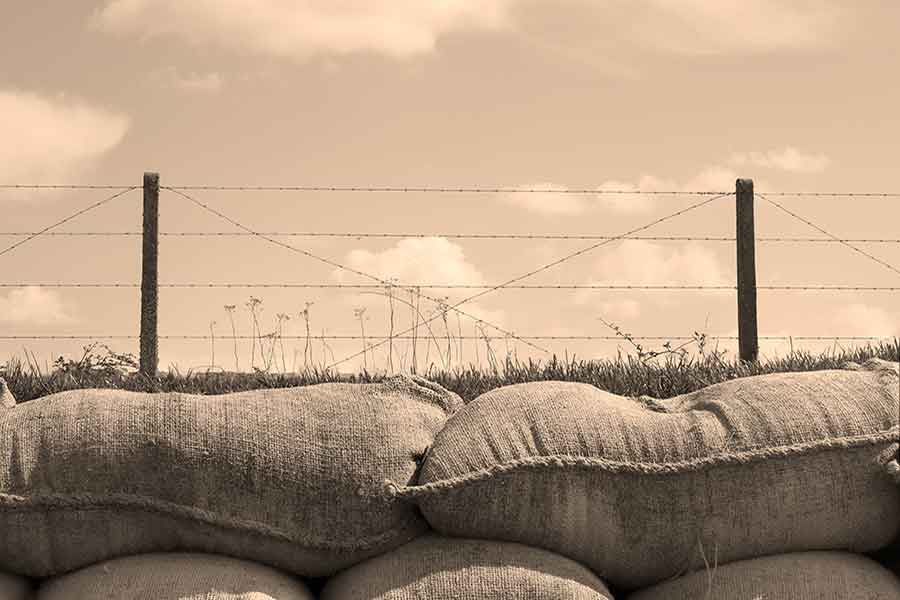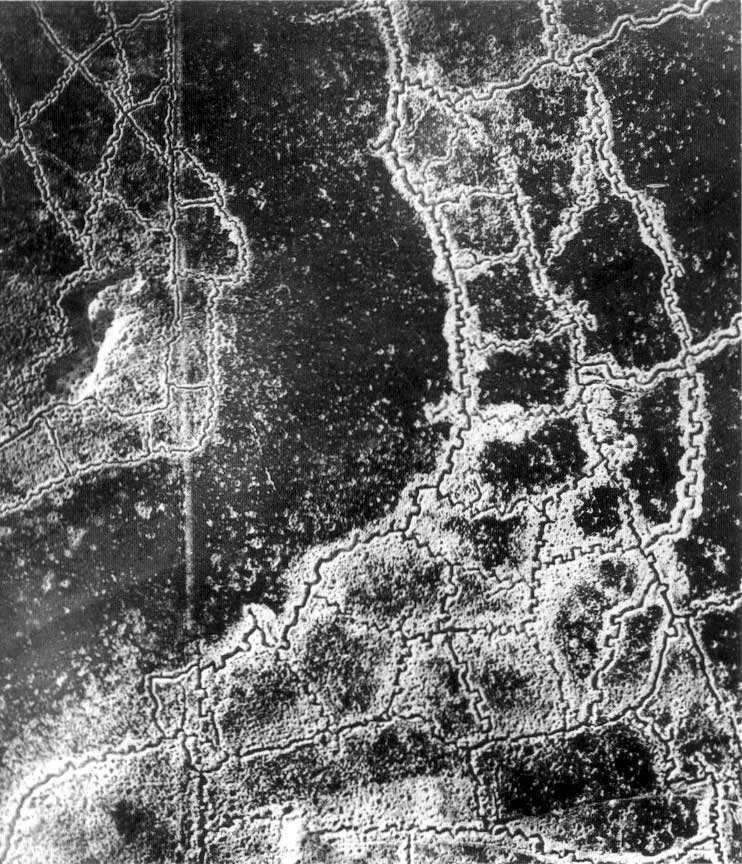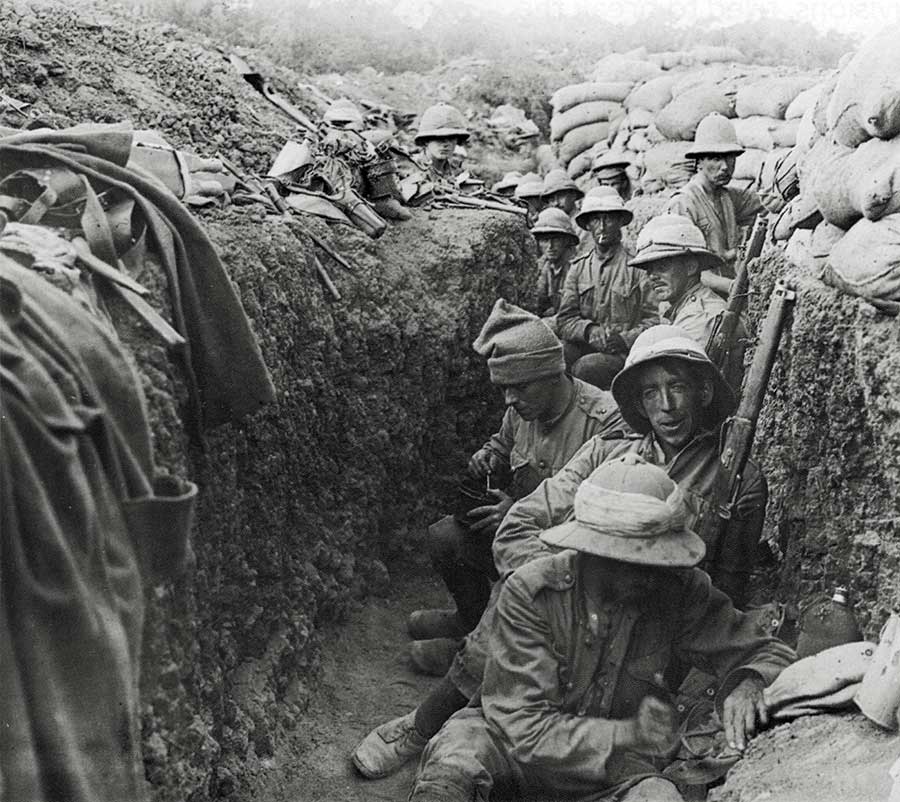Trench warfare began in September 1914 when both sides in the conflict dug in to take cover and hold their ground. By November 1914 there was 400 miles of trenches from Switzerland to the North Sea.
Trench Warfare
“
The land between the two enemy trench lines was called ‘No Man’s Land’ and was covered with barbed wire.

The land between the two enemy trench lines was called “No Man’s Land” and was covered with barbed wire. The enemy trenches were generally around 50 to 250 yards apart.
The typical trench was dug around twelve feet deep into the ground. There was often an embankment at the top of the trench and a barbed wire fence. Some trenches were reinforced with wood beams or sandbags. The bottom of the trench was usually covered with wooden boards called duckboards. The duckboards were meant to keep the soldiers’ feet above the water that would collect at the bottom of the trench.

The trenches weren’t dug in one long straight line, but were built as more of a system of trenches. They were dug in a zigzag pattern and there were many levels of trenches along the lines with paths dug so soldiers could travel between the levels.
“
The land between the two enemy trench lines was called ‘No Man’s Land.’ This land was sometimes covered with barbed wire and land mines.
Soldiers generally rotated through three stages of the front. They would spend some time in the front line trenches, some time in the support trenches, and some time resting. They almost always had some sort of job to do whether it was repairing the trenches, guard duty, moving supplies, undergoing inspections, or cleaning their weapons.
Trench life was however always one of considerable squalor, with so many men living in a very constrained space. Scraps of discarded food, empty tins and other waste, the nearby presence of the latrine, the general dirt of living half underground and being unable to wash or change for days or weeks at a time created conditions of severe health risk (and that is not counting the military risks). Vermin including rats and lice were very numerous; disease was spread both by them, and by the maggots and flies that thrived on the nearby remains of decomposing human and animal corpses.
Trenches flooded in the wet, sometimes to waist height, whenever it rained. Men suffered from exposure, frostbite, trench foot (a wasting disease of the flesh caused by the foot being wet and cold, constrained into boots and puttees, for days on end, that would cripple a man), and many diseases brought on or made worse by living in such a way.

